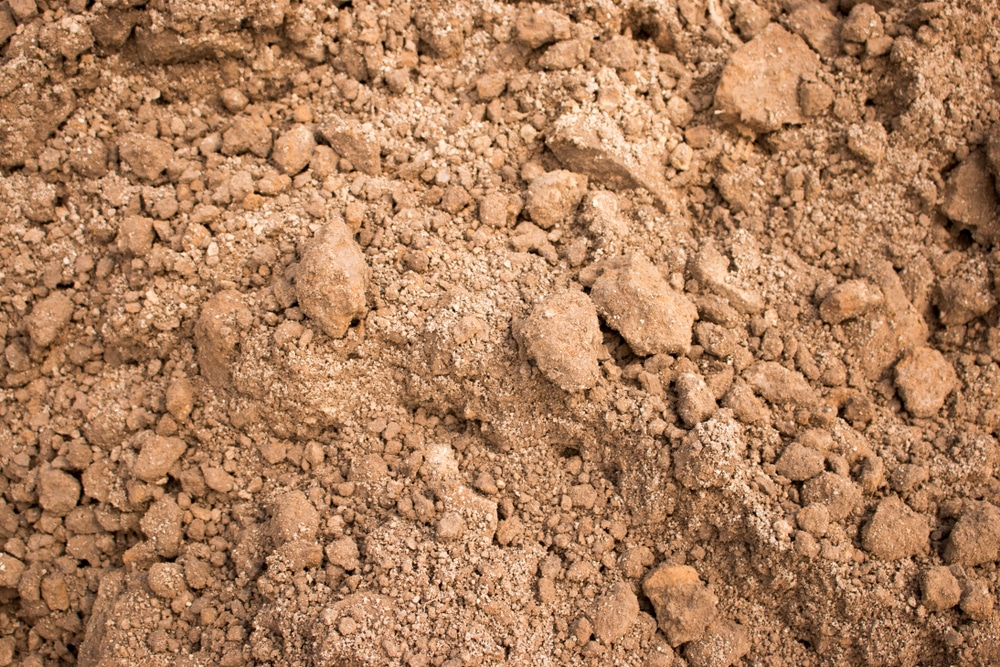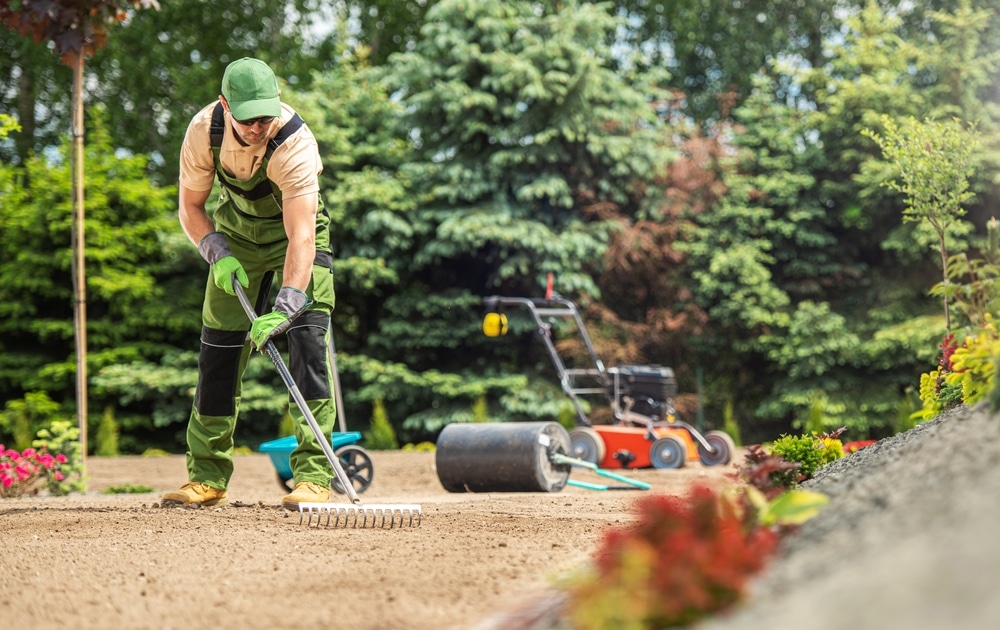Understanding Soil Types and Conditions
Before diving into planting grass seed, it’s crucial to get familiar with the soil in your yard.
Different soil types affect water retention, nutrient availability, and overall grass health.
Assessing soil composition, evaluating drainage and aeration, and determining soil pH levels will lay the groundwork for a lush, green lawn.
Assessing Soil Composition
Soil composition is fundamental for grass seed success. Here’s what you need to check:
- Texture: Squeeze a moistened handful of soil. Sandy soil falls apart easily, while clay retains shape and feels sticky.
- Structure: Look for crumbly soil that holds together lightly, indicating good organic matter content.
Evaluating Drainage and Aeration
Proper drainage and aeration are non-negotiable for healthy grass roots. Determine these by:
- Observing water pooling: After rainfall, notice how quickly water dissipates. Slow drainage might require interventions like core aeration.
- Conducting a percolation test: Dig a hole, fill it with water, and measure how long it takes to drain.
Determining Soil pH Levels
The pH level of your soil dictates nutrient absorption:
- Neutral pH (6.0-7.0) generally supports most grass types.
- Check pH with a test kit and adjust accordingly, using lime to raise pH or sulfur to lower it, ensuring your grass seed has all it needs to thrive.
Soil Preparation Techniques
Proper soil preparation is crucial for the successful germination of grass seed. Here’s how to effectively ready your soil, ensuring strong root development and a lush lawn.
Removing Weeds and Debris
- Begin by clearing your lawn area of all existing weeds, plants, and debris to prevent competition and ensure direct soil-to-seed contact. Rake the area thoroughly to remove any rocks, sticks, and dead plant material.
Tilling and Loosening the Soil
- Loosen the soil to a depth of about 4 to 6 inches using a tiller or garden fork. This introduces necessary air space, improves water absorption, and facilitates root growth.
- As highlighted by Nature’s Seed, incorporating organic matter at this stage can significantly enhance soil structure and fertility.
Nutrient Management
Before introducing grass seed to your soil, it’s critical to establish a nutrient-rich foundation. This ensures your grass will have the best possible conditions for germination and growth.
Adding Organic Matter
- Compost: Incorporate 2-4 inches of compost into the top 6 inches of soil to improve structure and add essential nutrients.
- Manure: Well-aged manure can also be a valuable addition, but ensure it’s free of weeds and not too fresh, which could harm seedlings.
Fertilizing for Optimal Growth
- Soil Test: Conduct a soil test to determine nutrient deficiencies and pH balance; this will inform your fertilizer choices.
- Fertilizer Application:
- Choose a balanced fertilizer suited for new grass.
- Apply it according to the instructions on the label, taking care to evenly distribute.
Optimizing Soil Conditions
To cultivate a lush lawn, you must focus on creating the ideal soil environment for grass seed. This involves precise moisture control and soil pH adjustments to ensure seed germination and root development.
Moisture Control
- Even Water Distribution: Ensure your soil is not too wet or too dry. An evenly moist soil provides the best conditions for grass seeds to absorb water and nutrients necessary for germination.
- Consistent Watering Schedule: Establish a watering routine to maintain soil moisture without over-saturating, which can lead to seed rot and disease.
Correcting Soil pH
- Test Soil pH: Grass seeds thrive in soil with a pH between 6.0 and 7.0. Use a soil test kit to determine your soil’s pH level.
- Adjusting pH Levels:
- If your soil is too acidic (pH below 6.0), incorporate lime into the soil to raise the pH.
- For alkaline soil (pH above 7.0), apply sulfur or peat moss to lower the pH to an optimal level for grass seeding.
Timing and Post-Preparation Care
Selecting the appropriate time for planting grass seed and implementing proper post-preparation care are crucial for ensuring a lush, healthy lawn. Let’s walk you through the prime planting windows and the post-seeding care steps you should take.
Seasonal Considerations
- Spring and Fall: The best times to plant grass seed are spring and fall. During these seasons, the moderate temperatures and increased moisture levels promote seed germination and strong root development.
- In spring, aim to plant after the last frost when soil temperatures reach at least 50°F (10°C).
- Fall seeding should be done at least 45 days before the expected first frost to allow the grass to establish.
Aftercare for Seed Germination
- Watering: Keep the soil consistently moist but not waterlogged. Gentle daily watering is needed until germination occurs, which typically takes 7-21 days.
- Fertilization: Approximately 6-8 weeks after germination, apply a starter fertilizer to encourage robust root growth as recommended by LawnFertilizers.com.
- Mowing: Begin mowing when the grass reaches 3 inches in height, which should be about a month after seedlings emerge. Do not cut more than one-third of the blade length to avoid stressing the young grass.
Frequently Asked Questions
Before diving into the specifics of soil preparation for grass seed planting, it’s important to address common concerns and questions. Here’s expert advice to ensure your grass seed has the best environment for growth.
What is the best method for loosening compacted soil before seeding?
To loosen compacted soil effectively, core aeration is a top method. This process involves removing small plugs of soil, improving aeration and water absorption. Learn more on improving soil in the deeper layers to encourage healthy root systems.
Which tools are recommended for preparing soil for grass seeding?
For optimal soil preparation:
- Use a rotary tiller to turn and aerate the soil.
- Employ a garden rake to level and remove debris.
- A lawn roller can help firm the soil lightly after seeding.
What steps are needed to prepare an existing lawn for overseeding?
To prepare your lawn for overseeding:
- Mow your lawn to a shorter height than usual to reduce competition.
- Rake vigorously to remove thatch and improve seed-to-soil contact.
- Core aerate if soil compaction is an issue to allow new seeds to nestle into the soil.
How should one deal with weedy areas when planting new grass seed?
For weedy areas:
- Clear the area of weeds by hand-pulling or using a non-selective herbicide.
- Wait the recommended time after herbicide application before seeding.
- Ensure thorough soil preparation so new grass can establish without competition.
What is the fastest way to cultivate grass on bare dirt?
Grass cultivation on bare dirt can be expedited by:
- Ensuring the soil is well-aerated, leveled, and moistened.
- Using fast-germinating grass seed varieties.
- Keeping the area consistently moist after spreading the seed.
What amendments should be added to the soil prior to seeding for optimal grass growth?
Before seeding, consider adding:
- Organic compost for nutrients.
- Lime if your soil test indicates low pH levels.
- Starter fertilizer to give seedlings a nutrient boost from the get-go.
Last update on 2025-04-17 / Affiliate links / Images from Amazon Product Advertising API




